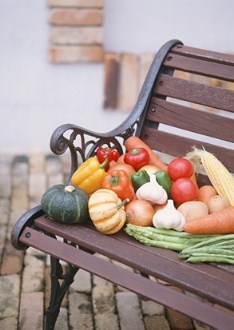Carotenoid content of food
Although carotenoids are present in many common human foods, deeply pigmented fruits, juices and vegetables constitute the major dietary sources with yellow-orange vegetables and fruits providing most of the β-carotene and α-carotene; orange fruits providing α-cryptoxanthin, dark green vegetables and such as carrots, sweet potato, pumpkin and dark green vegetables such as broccoli, green beans and spinach (Rao & Rao, 2007). Food sources of α-carotene also tend to be good food sources of β-carotene. Lycopene occurs primarily in tomato, in watermelon and guava. β-cryptoxanthin can be found in mandarin, orange, papaya, corn, peas and egg yolks. Good sources of lutein and zeaxanthin are leafy greens such as spinach, collard greens, and kale, and other foods such as corn, persimmons, and broccoli. Carotenoids can also be found in the animal kingdom (bird plumage, fish, crustaceans, and insects), as a matter of fact, astaxanthin and canthaxanthin are found in salmon and crustacean.
However, animals, (including humans) cannot synthesize carotenoids and, therefore, food is the only source of these compounds. On the other hand, the level of particular phytochemicals, such as carotenoids, varies in different fruits and vegetables according to the cultivated variety. In addition of cultivar variation, the content of phytochemical substances is influenced by numerous factors such as ripening time, genotype, cultivation techniques, climate conditions that occur during the pre-harvest period. In addition, various post-harvest steps, including food processing operations, have also a great influence on the stability of phytochemicals in fruit and vegetables and in their products. Conventional (thermal), modern or non-thermal (e.g. high pressure processing pulsed electric field, ultrasound/sonication, ozone, ultraviolet), domestic (e.g. washing, peeling, cutting) and industrial (e.g. canning, drying) processing may significantly degrade the level of phytochemicals in processed food products.



